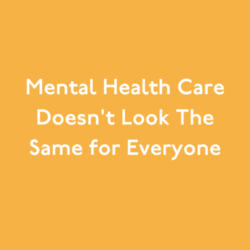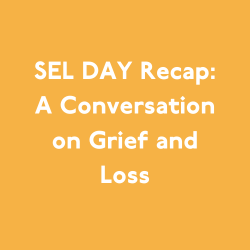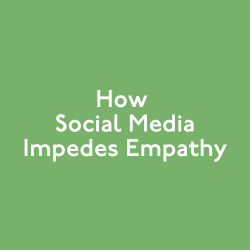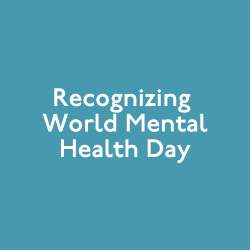
Photograph by Lynn Johnson
This is part one of our series on Brain Health based off an interview with Jeremy Richman, a neuro-pharmacologist who runs a foundation dedicated to preventing violence and building compassion through brain health research, community engagement, and education. We sat down with him to talk about what he has learned in his time studying the brain, what we can do to educate students about brain health and how we can help empower them to advocate for themselves and their peers when it comes to brain health and brain illnesses. In this article, we will discuss the difference between the “risk factors” and “protective factors” related to brain health and the development of abnormal behaviors.
Brain health and the work we do at Move This World around social emotional learning are intricately linked, because those who suffer from mental illnesses are often diagnosed by identifying a lack of skills that fall within the SEL umbrella, whether that be empathy, relationship skills, or emotion management. In this series we will highlight what we learned from Dr. Richman including how we define brain health, what to look for regarding risk factors, and how we can change treatment to adequately support individuals, and especially children, who may show signs of poor brain health.
Why is mental health stigmatized?
One of the major issues surrounding mental health and brain health is the lack of research and comprehensive knowledge we have about the brain. As Dr. Richman stated, in the last 50 years research has been committed to curing a number of illnesses including heart disease, cancer, and diabetes, but when it comes to the brain we know so much less, simply because it’s extremely difficult to study. This leads to uncertainty,
“Whatever is sort of outside in the shadows of our understanding is mysterious and it can just be simply magic or it could be feared and stigmatized. That’s unfortunately where ailments of the brain exist and we call them mental, which is a worthless word that has no meaning at all. Currently we diagnose diseases of the brain primarily based on symptoms that you can’t even see.”
Brain diseases are different from other physical illnesses because doctors don’t actually “find” something, rather, they determine, based on their opinion and experience, what kind of brain disease a patient has but without significant biological evidence to support this. Currently, there are no “cures” for brain diseases, but a complicated mix of experimental drugs and intensive therapy treatments,
“And so we need to move away from that. We need to move away from the invisible world of mental and towards a visible tangible world that we all understand based on the fact that the organ that we call the brain is the house of our memories our feelings and our behaviors. And if a behavior is abnormal, we might not understand it yet, but we do know it’s the organic and simple consequence of abnormal chemistry or structure.”
What consequences has this had on these individuals and society as a whole?
Because of the stigmatization around mental health and around individuals that are diagnosed with brain diseases, there are a whole bunch of people that are suffering from these symptoms and diseases, but they are either too scared or too ashamed to seek out help. We see films and TV series that depict the horror of mental health hospitals and the doctors who work there. When we think of people that have committed some of the most heinous crimes in history, we automatically attach a mental health diagnosis to them. These diagnoses might be accurate according to current methods and research, but those who suffer from these illness are actually more likely to be the victims of abuse and violence, however they are automatically included in this group that includes that minuscule percent that violently acted out against others.
What can we do to break the stigma?
Dr. Richman argues that we need to move away from diagnosing brain diseases based on a list of symptoms and past behaviors,
“The brain is the organ that houses our memories, feelings and behaviors. If a behavior is abnormal, which we can all agree [that violent and psychotic episodes are abnormal], it has to be the consequence of abnormal chemistry or structure. So it’s not something that you need to be ashamed of. “
Once society as a whole begins to understand the brain as an organ that needs regular check ups, exams, and a regimented health plan, just like the rest of the human organs, Dr. Richman believes that people will begin to advocate for their own brain health. He also knows that it will take lots of time and research before this shift can happen, but he believes that this is how we will begin proactively helping those that may be prone to violence or aggressive behaviors.
It’s exciting to think about the “three layers of health” being applied to brain health as well. These layers include: lifestyle change, medication, or surgical intervention. If a person goes to the doctor because they are overweight and experiencing symptoms of hypertension or cardiovascular disease, the first thing the doctor will recommend is a lifestyle change, including: a healthier diet, incorporating exercise and identifying a stress management technique. If a lifestyle change doesn’t alleviate the symptoms then the doctor will likely prescribe some type of medication, in this situation it would likely be something to lower blood pressure. Finally, if medication does not work, eventually heart surgery will likely be needed. As of now, these three levels of treatment don’t exist within brain health.
“When it comes to brain health, we just expect the second level, we go straight to the medication. I’m excited that people are exploring the other avenues: lifestyle avenues and heavy intervention. In the future, it will likely be something we can’t even picture today.”
In the meantime, it is our responsibility to educate ourselves and those around us about the risk factors that are affiliated with poor brain health. In our next article, we will share Dr. Richman’s explanations of the difference between “risk factors” and “protective factors”, and how we can use these to identify individuals that are at risk for developing abnormal behaviors.
Sign up for Move This World’s newsletter to stay up to date on social emotional learning.
Enter your email below!










